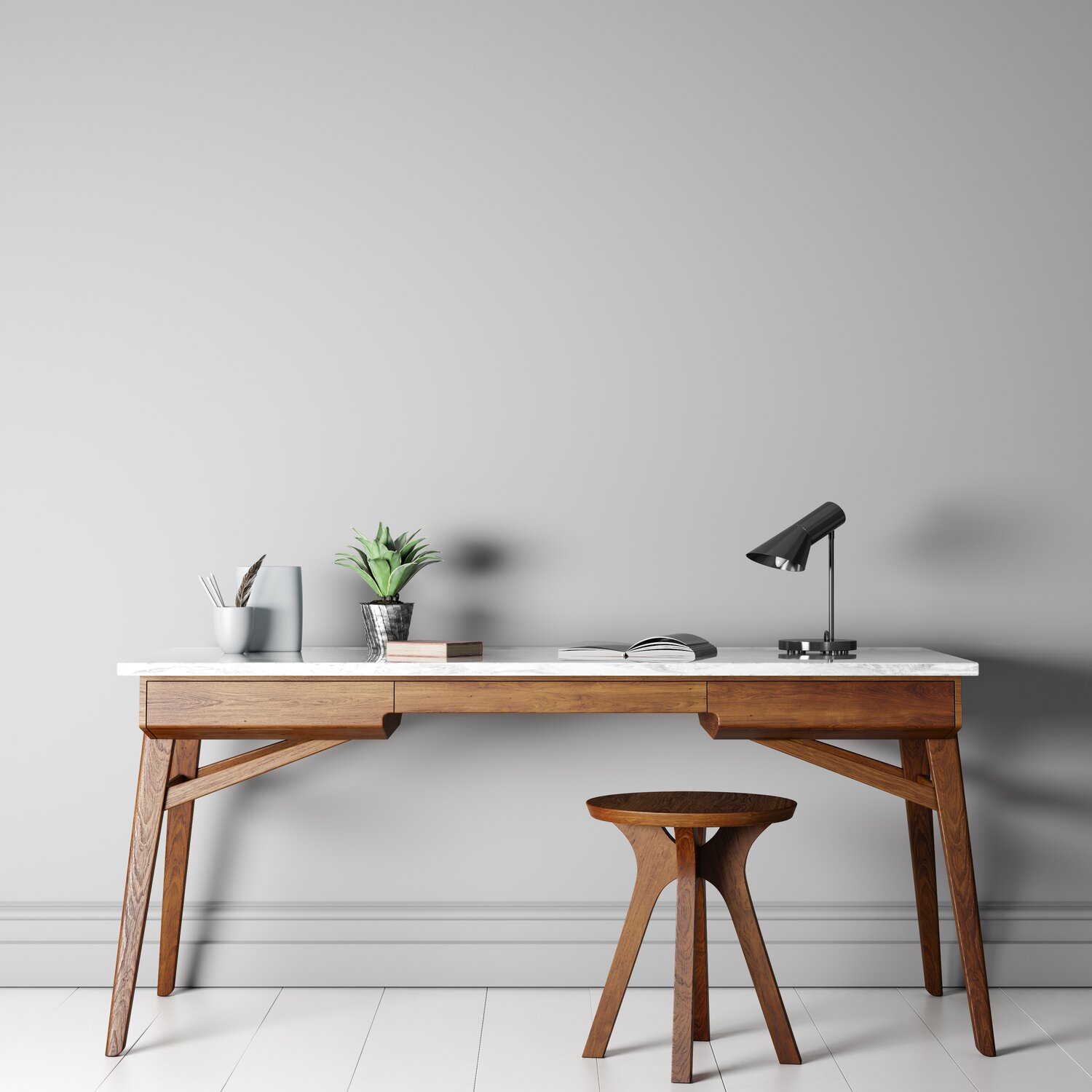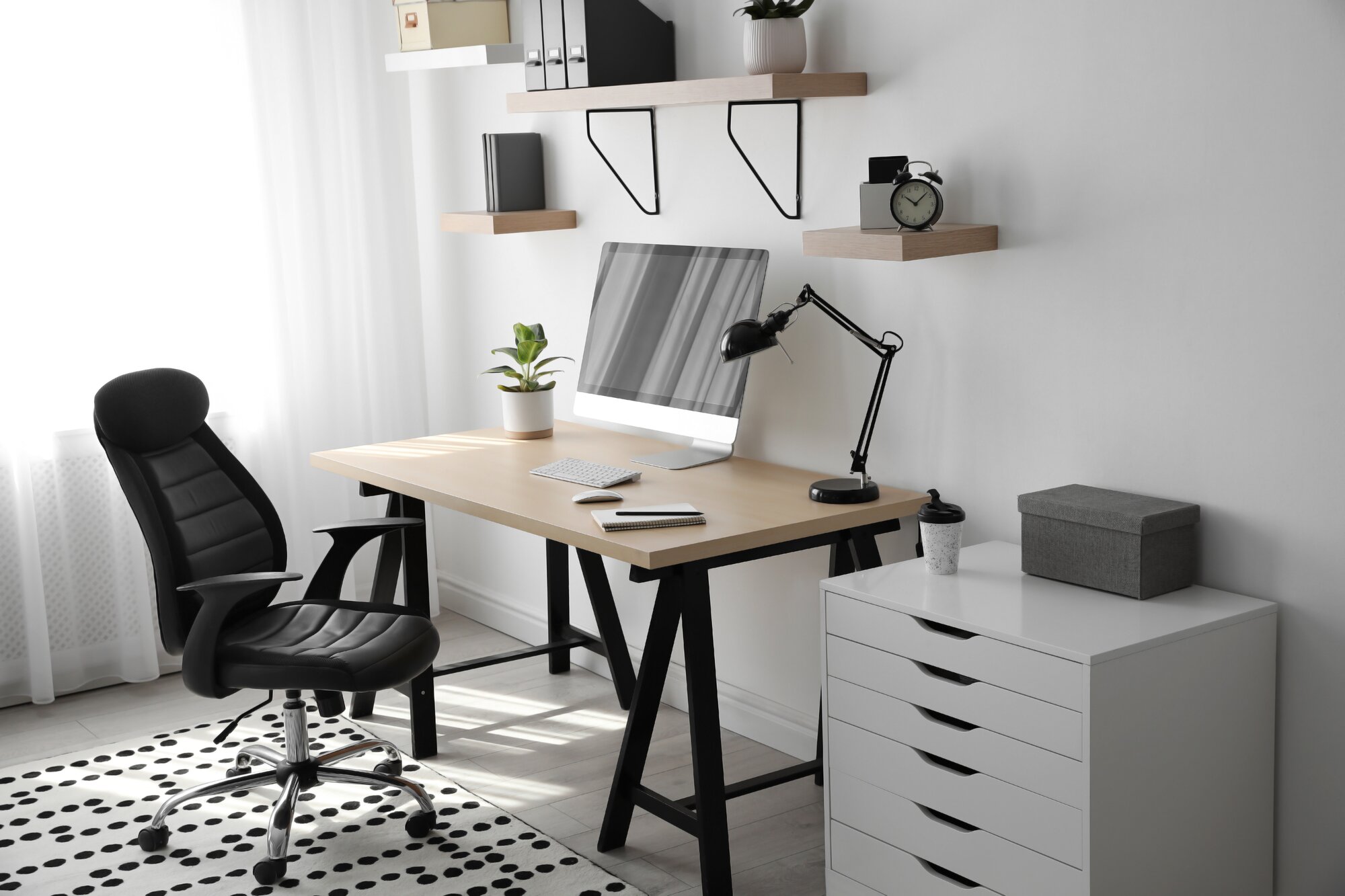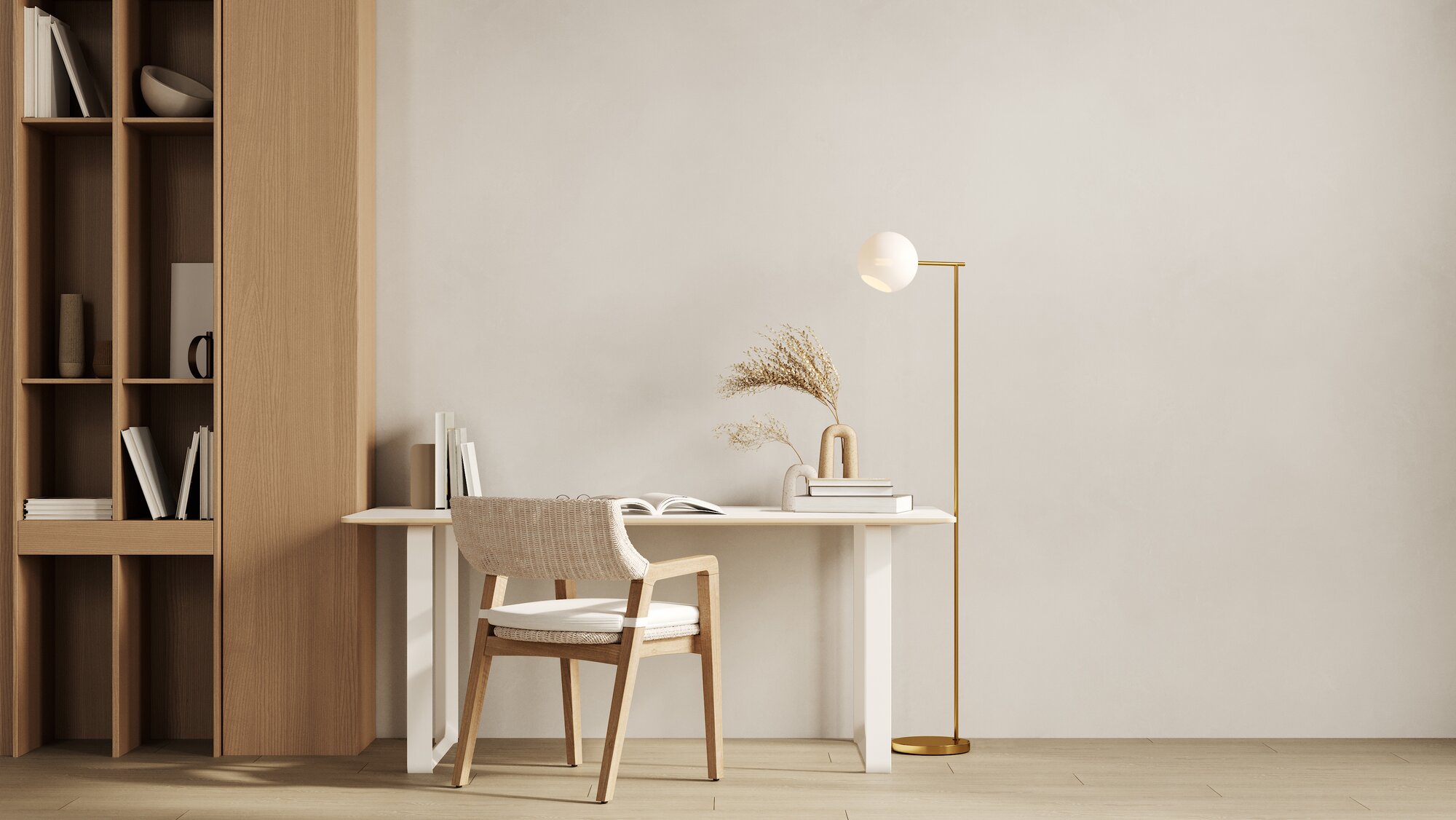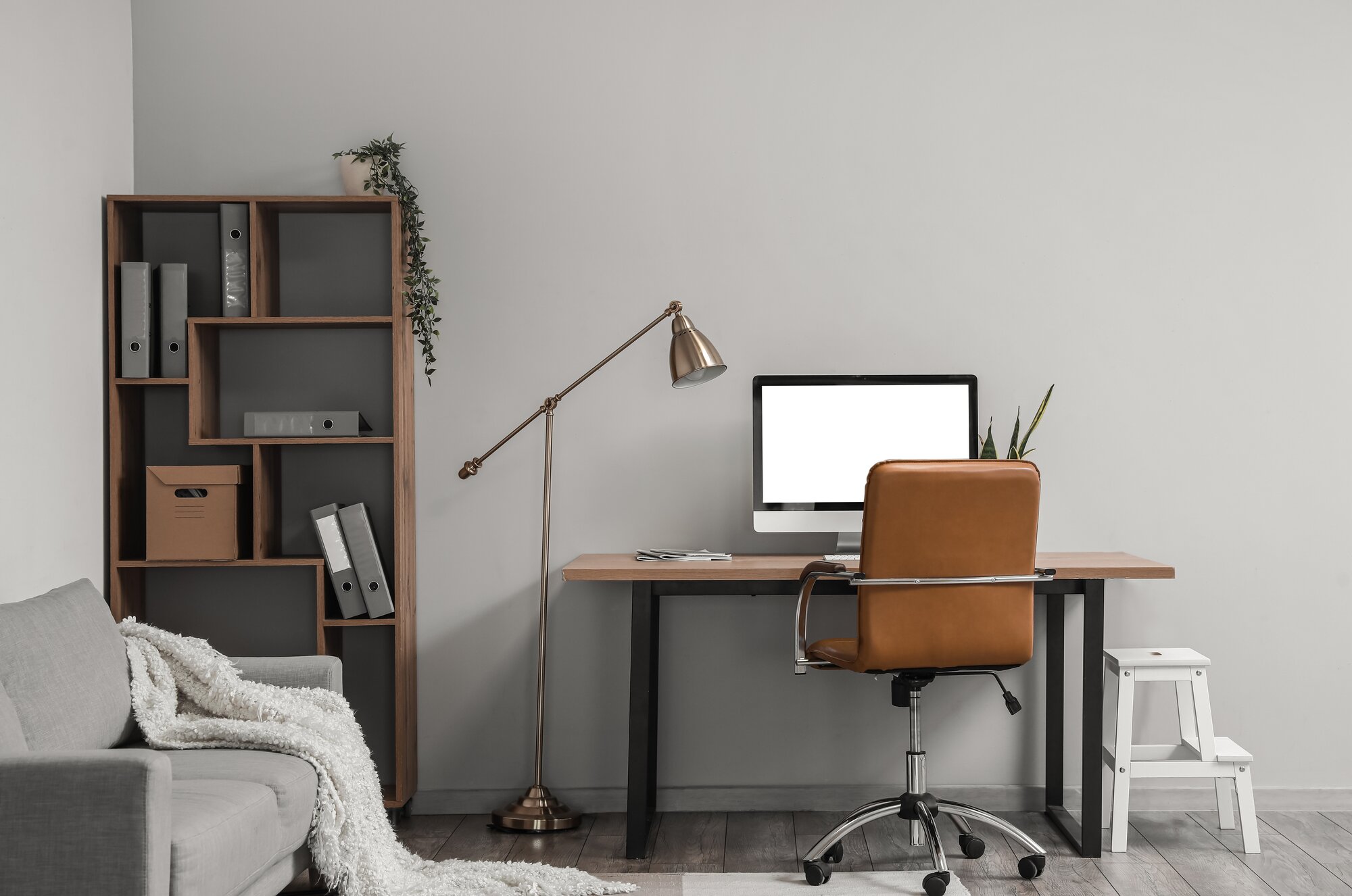How To Choose an Office Chair for Your Space, Style, and Body


Working behind your desk should be comfortable and productive from the time you sit down to the moment you stand up. All it takes is the right office chair.
Although the choices for office chairs seem endless, our guide is ready to help you make an informed decision. Choose a seat that fits your style and needs by learning about common office chair styles, how to find your optimal sitting posture, and more.
Although the choices for office chairs seem endless, our guide is ready to help you make an informed decision. Choose a seat that fits your style and needs by learning about common office chair styles, how to find your optimal sitting posture, and more.
Shop Desk Chairs
Common Types of Office Chairs
Conventional Office Chairs
Executive Chairs
These chairs are a statement piece in any office. They’re usually made with quality materials and a commanding design featuring tall or winged backs, paired with wood and leather detailing. These chairs can be on the more expensive end.
Computer Chairs
Also known as task chairs, they’re commonly used by people who want a slim but supportive seat. Available with or without arms, you can find computer chairs with lumbar support, adjustable controls, a swiveling base, and casters for easy mobility.
Drafting Chairs and Stools
Made to be paired with elevated surfaces like drafting tables or standing desks, these chairs are usually taller and come with an adjustable footrest. Adjustable drafting chairs and stools allow you to switch between a standing and sitting position. Their backrests are usually made of mesh and contain lumbar support to deliver hours of comfort.
Ergonomic Chairs
Gaining popularity in recent years for their health benefits, ergonomic chairs are uniquely designed to support your natural posture. They’re engineered with highly adjustable features like lumbar support, head- and armrests, tilting mechanisms, and much more. They’re usually made of mesh and other breathable fabrics. Ergonomic chairs are especially coveted by gamers and remote workers, thanks to their enduring comfort and support.
Heavy-Duty Office Chairs
Heavy-duty office chairs are sometimes called the 24-hour or 24/7 chairs. These chairs are great for employees who have long shifts and those who need a chair that can withstand a weight capacity of over 400 pounds, giving them maximum support where it’s needed.
Conference Chairs
These chairs give off an authoritative air in their design. Most conference chairs are engineered with lumbar support and armrests that keep arms and elbows at an optimal angle. Their seats feature a forward tilt to keep people focused, encouraging active engagement. They’re also made to be durable, with bases made of aluminum and casters made of nylon.

Office Chairs Growing in Popularity
Kneeling Chairs
Popular among those who need to find relief from lower back and pelvic pain, kneeling chairs are made to keep pressure on the shins. Though it can be tricky to get in and out of them, kneeling chairs are an innovative solution to engaging your core and maintaining a good sitting posture. Some kneeling chairs are even manufactured with a backrest.
Active Chairs
Initially, active chairs were simply a yoga ball dropped in a chair frame. Also known as dynamic chairs, they are designed to correct bad posture and strengthen weak legs, core, and back muscles. Nowadays, active chairs have evolved into saddle chairs, wobble chairs, leaning stools, and much more.
Saddle Chairs and Stools
Saddle chairs and stools are named after equestrian saddles in name and design. Anyone who sits on them is forced into a riding-seat position, where your legs are dispersed over the sides, which surprisingly corrects poor posture. Their design opens your hips, alleviating pelvic pain and other discomfort. Like a conference chair, these chairs have a forward-lean that reduces the risk of back injuries and musculoskeletal disorders.
Leaning Stand Chairs
To encourage sitters to constantly change their postures and embrace natural movement, the leaning stand chair lets you easily transition from leaning to sitting.
Big and Tall Chairs
These chairs are specially made for taller and bigger people who need extra room between their bodies and the armrests, more legroom, and taller backrests and armrests.
Petite Chairs
Petite chairs are made for those who need their chair’s height to be as low as 15 inches. Petite chairs also offer smaller footrests and lower backrests that offer ergonomic support throughout the day.


Features To Look for in Office Chairs
Adjustability
Height
Most office chairs have a height range from 16–21 inches, accommodating anyone from 4’1” to 6’6”.
Tilt
The preferred term for the ability to recline or lean back, this feature allows you to kick back into a more relaxed position. A tilt lock can help limit the range of the recline.
Backrest
For anyone who’s taller or shorter than average, being able to adjust the height of your backrest is ideal for helping you achieve proper spine alignment.
Armrest
Although some chairs come with fixed armrests, there are many that can be adjusted up, down, and even side to side.
Size
Ideal Width
No matter which chair you pick, there should be at least an inch of space between your body and the armrests. Any more may lead to shoulder and neck strain when you stretch to reach the armrests. Any less may lead to discomfort and a feeling that you’re squeezed in.
Ideal Depth
When you sit with your back flush against the backrest, you should have about 2–4 inches, or a few fingers, of clearance from the back of your knees to the edge of your seat. This will avoid the chair digging into the back of your knees while still offering ample support.
Padding and Material
There are a wide range of materials that are used for office chairs. Often office chairs are made with breathable options like mesh and performance upholstery that are great options for anyone who runs warmer. Many executive chairs are available in leather and faux leather, which is great for anyone who runs cold as these materials capture heat.
When it comes to padding and foam, we recommend choosing whatever level of give will promote long-term comfort for you — whether that’s plush padding with a “sinking feeling” or a firm and supportive seat.
When it comes to padding and foam, we recommend choosing whatever level of give will promote long-term comfort for you — whether that’s plush padding with a “sinking feeling” or a firm and supportive seat.
Mobility
Casters
Your office chair should be able to move smoothly across the surface of your office space. Look for casters that accommodate your floor material, from carpet to hardwood.
Swivel
Also, consider if you would benefit from a chair that swivels. This is ideal for anyone who needs turn often to grab items beside or behind them.




Best Sitting Posture in Office Chairs
Height & Tilt
No matter your height, your feet should be flat on the ground when you sit. Your thighs should sit parallel to the floor with your knees at a 90-degree angle. This position will prevent poor blood circulation and undue stress on your knees and lower back.
If your chair has a tilting mechanism, we recommend reclining slightly at a 100- to 110-degree angle.
If your chair has a tilting mechanism, we recommend reclining slightly at a 100- to 110-degree angle.
Back & Lumbar
Protecting your back is crucial. Many chairs are designed with that signature ‘s-shape’ that supports the natural curvature of your spine, encouraging a healthy and neutral posture. If your chair lacks lumbar support, we recommend adding lumbar cushions to improve your comfort and spinal stability.
Some chairs have the option to adjust the backrest. Using the lever or knob to either pull up or lift the backrest until the curve of the chair aligns with your spine.
Some chairs have the option to adjust the backrest. Using the lever or knob to either pull up or lift the backrest until the curve of the chair aligns with your spine.
Arms
Whether you go for armrests, stools, or armless chairs, we recommend being aware of the way your forearms, wrists, and shoulders rest. Elbows should be at a 90-degree angle, with your forearms and wrists level with your keyboard. Make sure your shoulders are relaxed.
Other Considerations
Monitor Position & Angle
To ensure your neck and shoulders are aligned, make sure your monitor works well with your sitting posture, desk height, and chair. Your computer screen should sit at eye level, letting you look roughly straight ahead to your screen without straining your neck or hunching your shoulders. The furthest your eyes should adjust is looking down two inches.
As for your distance from the screen, we recommend keeping your monitor at arm’s length. Something farther away will encourage a forward neck position, which can cause tension and strain in your neck and shoulder muscles. Anything closer may lead to eye strain.
As for your distance from the screen, we recommend keeping your monitor at arm’s length. Something farther away will encourage a forward neck position, which can cause tension and strain in your neck and shoulder muscles. Anything closer may lead to eye strain.
Available Space
When you’re measuring your space for an office chair, allow approximately 36–40 inches of space behind your desk for your office chair. This will give you enough room to move, swivel, and lean back comfortably. Plus, consider location of power outlets, vents, moldings, windowsills, and any entryways and doorways that may be impeded.

The Perfect Office Chair Awaits
Now that you have a better idea of what kind of office chair suits you, it’s time to start browsing. Discover a wide range of options on furniture.com to increase comfort, style, productivity, and comfort in your home office and study.
Shop office chairs